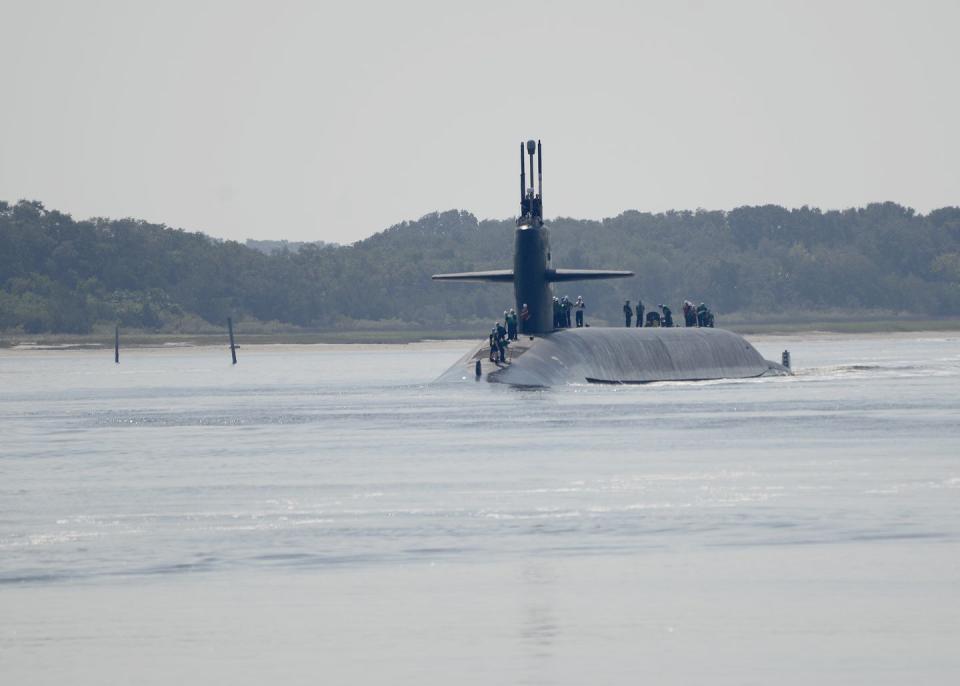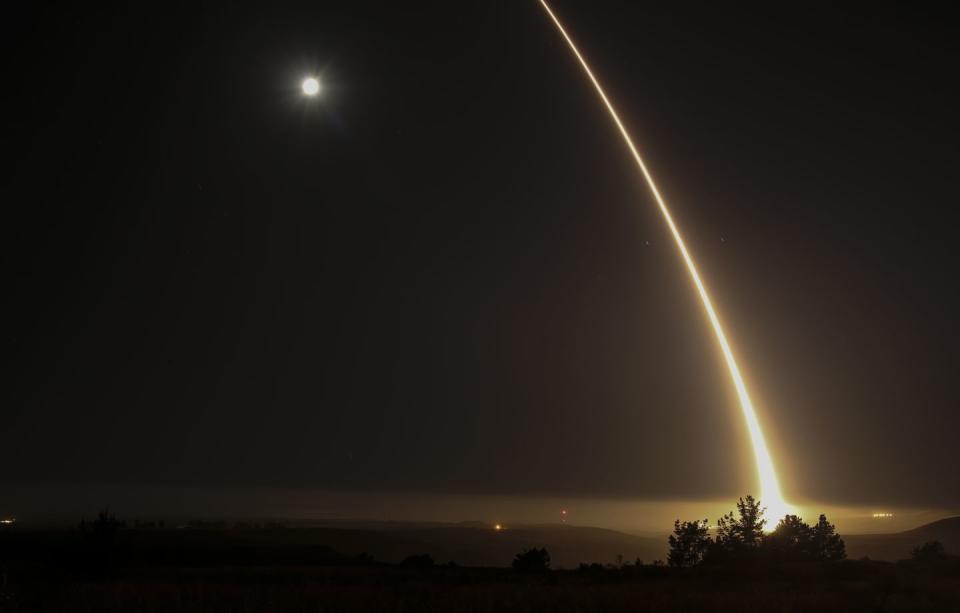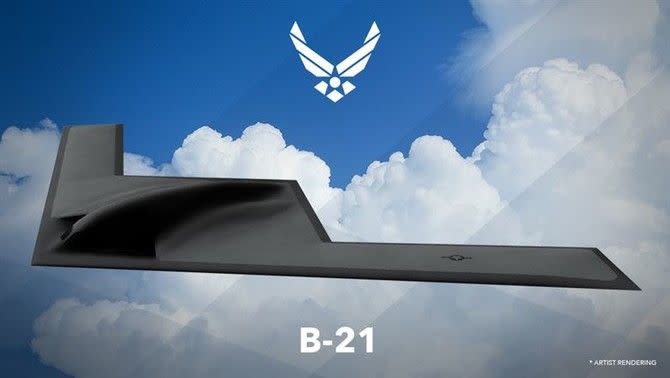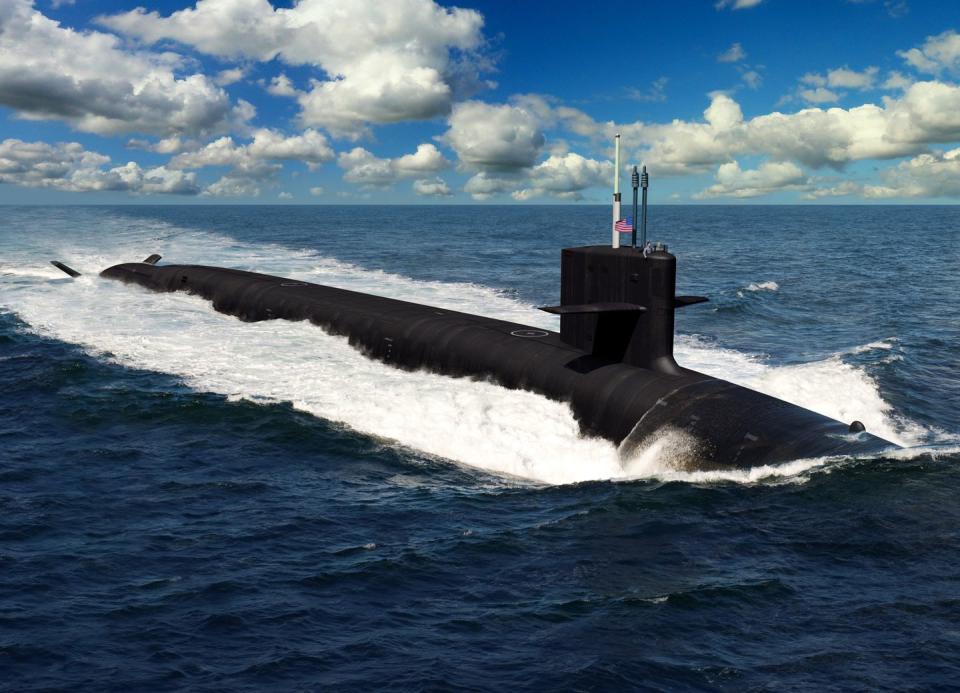Rethinking the Triad: Does a Nuclear 'Dyad' Make More Sense?

The U.S. Secretary of Defense has committed to maintaining the current nuclear triad.
Each leg of the triad will need replacing over the next thirty years, at a cost of approximately $300 billion.
Do we still need a triad, and could we save some money while deterring nuclear war?
This week U.S. Secretary of Defense Mark Esper spoke out in support of maintaining the nuclear “triad,” the combination of nuclear-capable bombers, intercontinental ballistic missiles, and nuclear missile submarines that form the Pentagon’s strategic nuclear war-fighting capability. All three legs of the triad—the B-2 bombers, Minuteman III missiles, and Ohio-class ballistic missile submarines—are scheduled to be replaced over the next 20 years. The process will be expensive and time consuming, leading to the obvious question: could America get by on a “dyad” or maybe even less?
The United States maintains approximately 1,600 strategic nuclear weapons deployed around the world. This includes 400 warheads on 400 Minuteman III intercontinental ballistic missiles (ICBMs) sitting in hardened silos across the West, roughly 900 on a force of 12 Ohio-class ballistic missile submarines, and another 600 at U.S. bomber bases to equip B-52H Stratofortress and B-2 Spirit bombers. The U.S. keeps another 150 tactical nuclear weapons at air bases in Europe and has a stockpile of another 2,050 in reserve.

The U.S. has maintained the nuclear “triad” since the early 1960s. The reasoning is that each leg of the triad is particularly good at something the other two are not. The three together are mutually supporting, providing an all-around useful nuclear force. Bombers are secure, can be recalled from missions, can instantly assess the damage done by their nuclear strikes, and can be retargeted mid-flight. ICBMs were accurate, reliable, can hit their targets in half an hour or less, and can carry large payloads. Submarines can remain at sea for months at a time, undetectable and holding enemy targets at risk.
The end of the Cold War placed America’s nuclear arsenal on the back burner, and new strategic nuclear delivery systems haven’t been developed for more than three decades. The Pentagon is warning however that the B-2 Spirit, Minuteman III, and Ohio-class ballistic missile submarines are approaching the end of their service lives and must be replaced. The new B-21 Raider bomber program will cost $97 billion, the Ground Based Strategic Deterrent missile, designed to replace the Minuteman III, will cost $85 billion, and the new Columbia-class ballistic missile submarines will cost $115 billion. The cost to replace existing systems and maintain the current weapons stockpile will cost $1.2 trillion over 30 years.

Let’s start with the B-21 Raider. The B-21 will replace the B-2 Spirit and B-1B Lancer bombers. While the second most expensive replacement program, it makes sense to keep the leg of the triad most capable of being recalled in a crisis. The B-21 will also be dual-capable, meaning it will fly both nuclear and conventional missions. The B-21 will carry a lot of conventional weapons a long distance, making it invaluable in a future, non-nuclear conflict. So let’s think about keeping the B-21.
Then there's the Ground Based Strategic Deterrent, the replacement for the Minuteman III. The rationale for the ICBM makes less sense in the 21st century as submarine-launched missiles have become much more accurate. While ICBM advocates claim the hundreds of hardened silos spread out across America act as a warhead-sink, soaking up enemy nuclear weapons in a nuclear war, it seems quite likely that, if the silos were to go away, our adversaries would simply retire the weapons meant to go after them. It also seems like a bad idea to induce the enemy to drop hundreds of megatons of nuclear warheads on American soil, where the radioactive fallout will travel east and contaminate the country’s breadbasket. Let’s consider dropping GBSD.

The system safest from our cuts is probably the most expensive, the Columbia-class submarines. Nuclear missile submarines, once at sea are invulnerable to attack, and the current Ohio-class submarines have never been tracked by an enemy sub. As long as a single submarine remains at sea, armed with 24 Trident II D-5 missiles, no foreign power would dare launch on the U.S. So, let’s keep the Columbia-class.
Our first option is to dissolve the ICBM force, and that will save the $85 billion that would have gone to Ground Based Strategic Deterrent. That would leave us with a diad of bombers and submarines. We could plow that $85 billion into buying more of either, use it to rejuvenate the U.S. Air Force’s aircraft fleet (the average age is 29 years), or simply use it to help pay off the deficit.
Another option is to get rid of both GBSD and the B-21 Raider bomber, saving $182 billion. This is the point where our nuclear cuts begin to create risk, because losing the B-21 leaves the U.S. with only Trident II D-5 missiles, and unlike a bomber, once launched you can’t recall them. It’s worth remembering that the United Kingdom and France, having cut their nuclear arsenals, both decided to keep their submarine-launched nuclear deterrent.

At some point, the U.S. needs to determine if there’s an acceptable balance between the size of the nuclear arsenal and the money saved.
You Might Also Like


